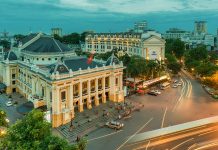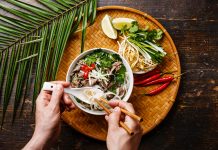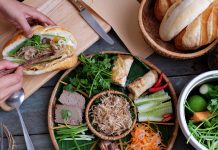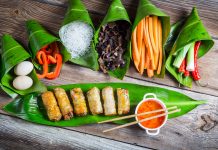Traditionally eaten in the early the morning for breakfast, Pho has become an everyday, any time meal and, undeniably, Vietnam’s most famous food ‘brand ambassador’. Pho’s popularity and its esteemed position in society is decades old. Back in the 1930s, Vietnamese novelist and short story writer Thach Lam (1909-1942) paid homage to this dish. He penned the sentiment of Pho being Hanoi’s special gift saying that many restaurants served this soup around the country, but Hanoi’s version is the best. “Pho is a specialty of Hanoi. You can taste it in other places. But the pho is better in Hanoi than anywhere else.”
 He commented that Pho is a culture and something he missed greatly when he was out of the city. While another renowned writer, Nguyen Tuan (1910-1987) likened eating pho to performing a religious ritual. Sentiments such as these remain true today. So what is this dish so strongly and famously revered? And what makes Hanoi’s pho so good?
He commented that Pho is a culture and something he missed greatly when he was out of the city. While another renowned writer, Nguyen Tuan (1910-1987) likened eating pho to performing a religious ritual. Sentiments such as these remain true today. So what is this dish so strongly and famously revered? And what makes Hanoi’s pho so good?
As an academic aside, the word ‘pho’ actually refers to a type of flat white rice flour noodle rather than the name of the soup. But for simplicity and following the nation’s psyche, Pho here refers to pho noodle soup – of which there are many different variations throughout the country.

Pho is made with either beef or chicken, rice noodles, spices, spring onion and herbs; for vegetarians there is even pho chay (vegetarian pho). Recipes for a perfect clear fragrant broth are often closely guarded family secrets handed down from generation to generation.
 Unsurprisingly given the lack of documentation on the origins of Pho, various theories exist about how this dish arose.
Unsurprisingly given the lack of documentation on the origins of Pho, various theories exist about how this dish arose.
Pho soup first made a recognizable appearance in the early 20th century. Popular in north Vietnam it spread to central and southern regions from 1950s after the August revolution. Many say Pho originated from the small, poor villages of Van Cu and Dao Cu in Nam Dinh province, south west of Hanoi before the French colonial times. Mr Van, one of the villagers, is said to have gone to Hanoi in 1925 where he opened up a pho stall on Hang Hanh Street (near Hoan Kiem Lake).
Another theory explains Pho was inspired by Chinese and French influences. Rice noodles and spices would have come from China, where a soup similar to Pho already existed. Some people say that in the French colonial era (from the 1880s) the French popularized the cooking beef (traditionally cows were used more for agricultural farm work). The appeal of eating beef widened amongst the Vietnamese population, especially the middle class, while poorer citizens creatively used the discarded bones and meat parts to make a delicious soup. Meanwhile, others point out a similarity in pronunciation. ‘Pho’ could be an adaption of the French word ‘feu’ meaning fire. And, although a different type of dish, one theory says Pho is a modification of the French beef stew pot-au-feu introduced into Vietnam by the French.
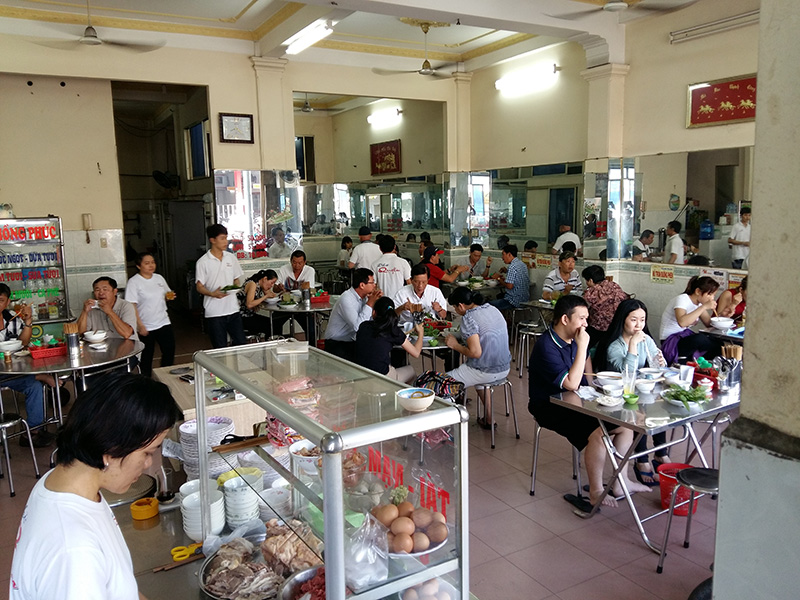 A common sight in late 19th century Hanoi would have been mobile Pho vendors carrying their culinary delights around the city, stopping on street corners to sell their delicious soup from dawn until dusk. Then, around 1910 came fixed Pho stalls. It is believed the first were the state-owned Cat Tuong stall on Cau Go street, a Chinese owned establishment at the Hoan Kiem Lake tram stop and Truong Ca stall in Hang Bac street. By 1918 a few more had opened up before Mr Van from Nam Dinh arrived in 1925.
A common sight in late 19th century Hanoi would have been mobile Pho vendors carrying their culinary delights around the city, stopping on street corners to sell their delicious soup from dawn until dusk. Then, around 1910 came fixed Pho stalls. It is believed the first were the state-owned Cat Tuong stall on Cau Go street, a Chinese owned establishment at the Hoan Kiem Lake tram stop and Truong Ca stall in Hang Bac street. By 1918 a few more had opened up before Mr Van from Nam Dinh arrived in 1925.
Originally, there was only one type of pho soup which was made from well-done beef. Then in 1939, following a government crackdown on slaughtering cows and preventing the sale of beef on Mondays and Fridays, people switched to making chicken Pho soup as beef supplies dwindled.
Nowadays variety abounds. One only has to look at any Pho shop menu to see the long list of beef Pho options including well done meat (chin), rare (tai), flank steak (nam), fatty brisket (gau), beef meatballs (bo vien) and so on. Equally popular is chicken Pho but the variety is less while the dish is simpler, lighter and much quicker to prepare than its beef counterpart.
Pho dishes (let’s refer here to the beef variety) also have regional variations. Pho in Hanoi and north Vietnam (‘Pho Bac’) is a simpler soup, with fewer ingredients and cuts of meat than in the south. The white pho noodles also differ between the two regions. Hanoi Pho broth is purer, sprinkled with chopped green onions and basil, supplemented by fresh red chili, chili sauce, chili and garlic in vinegar and lime on the side. Southern style Pho (‘Pho Nam’) requires more ingredients. The broth is sweeter and thicker while southerners also like raw beansprouts, mint, hoisin sauce and lime on the side.
Everyone probably has their favorite Pho dish, from their favorite pho stall. But rightly or wrongly, the true Pho connoisseurs would say Pho Bac (northern Pho) is the true Pho.
Pho noodle soup is now one of Vietnam’s most iconic of dishes. It is the star of a decades old love affair which started in the north, blossomed in Hanoi, and remains forever strong.

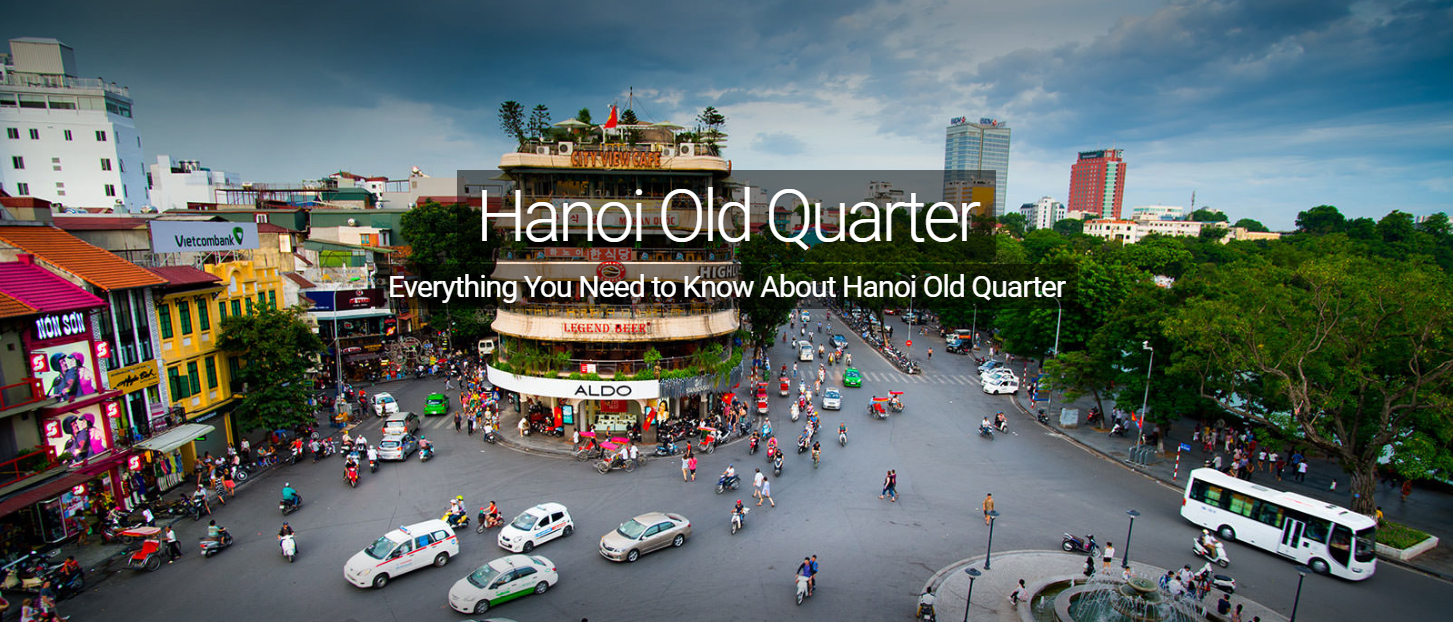 Notice: Undefined variable: header_logo_image_size in /home/halongbay/domains/hanoioldquarter.info/public_html/wp-content/plugins/td-standard-pack/Newspaper/parts/header/logo-mobile.php on line 59
Notice: Undefined variable: header_logo_image_size in /home/halongbay/domains/hanoioldquarter.info/public_html/wp-content/plugins/td-standard-pack/Newspaper/parts/header/logo-mobile.php on line 59
